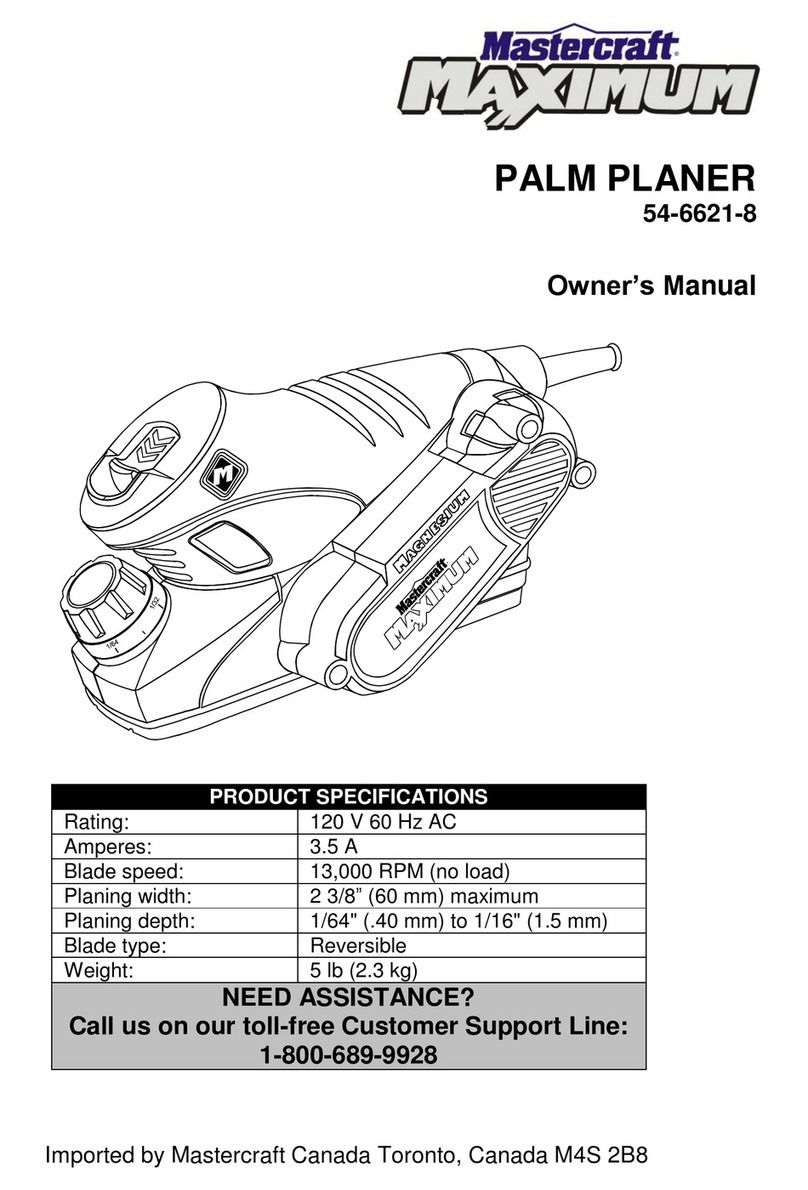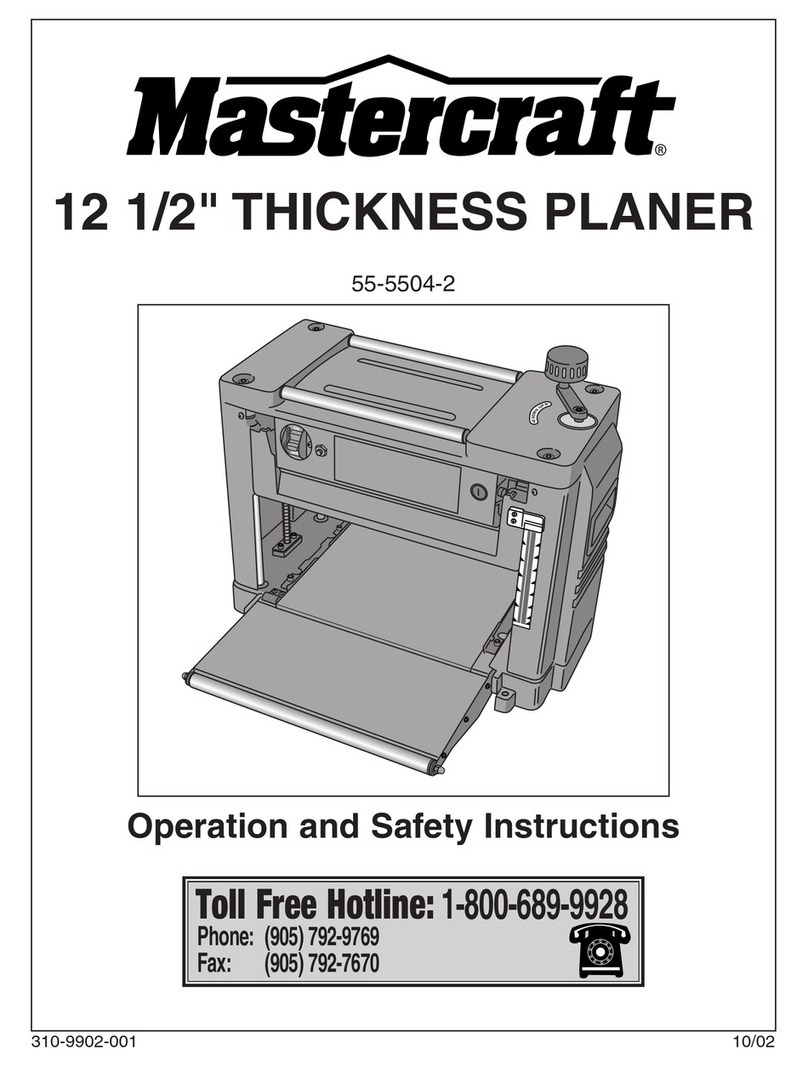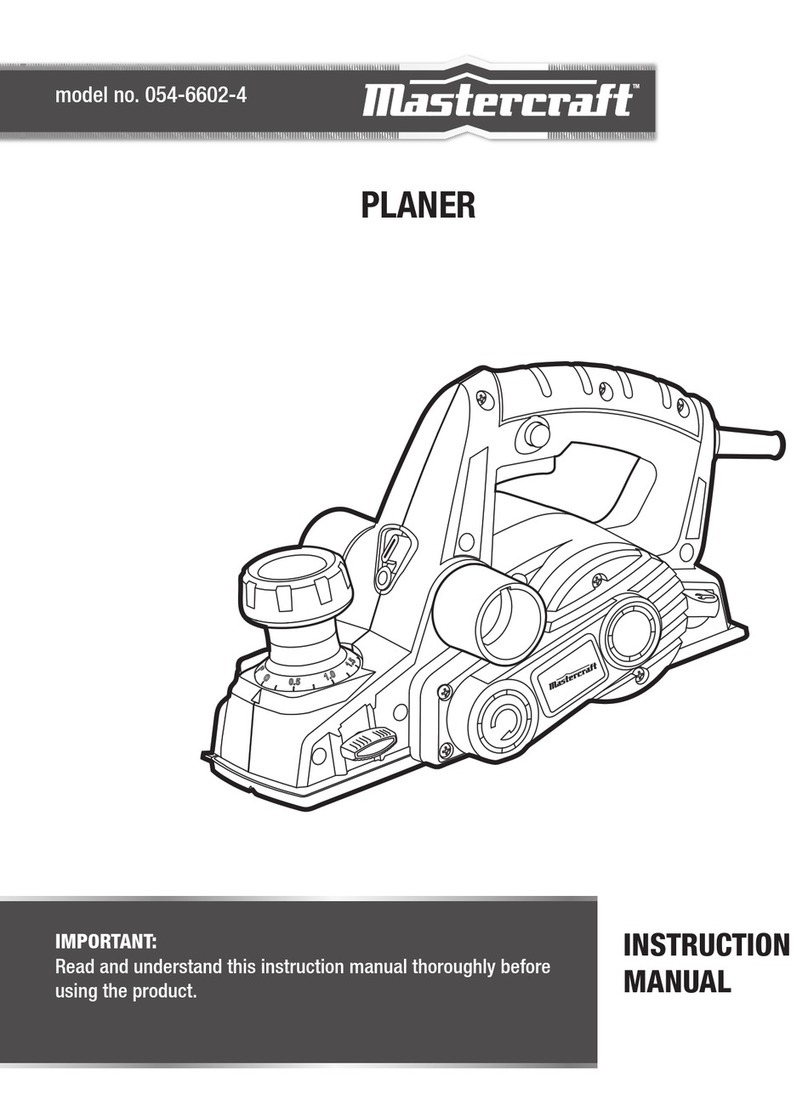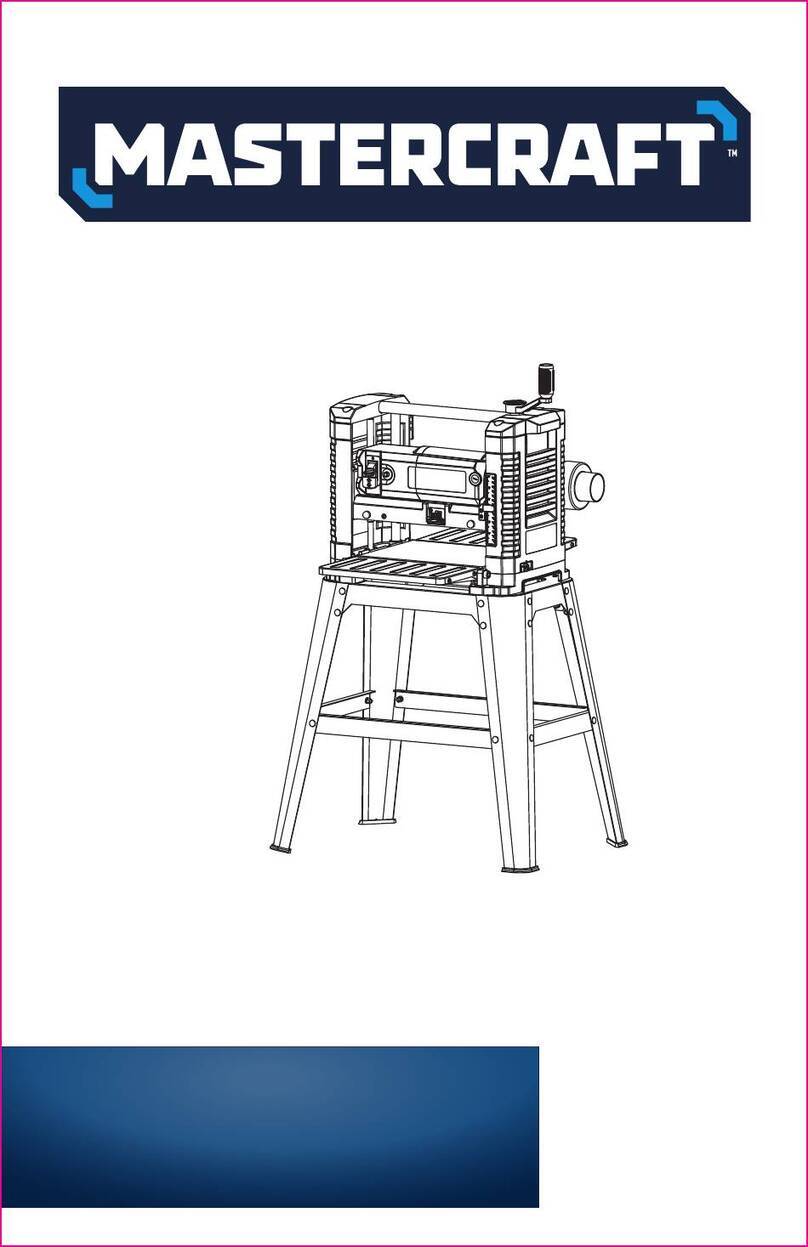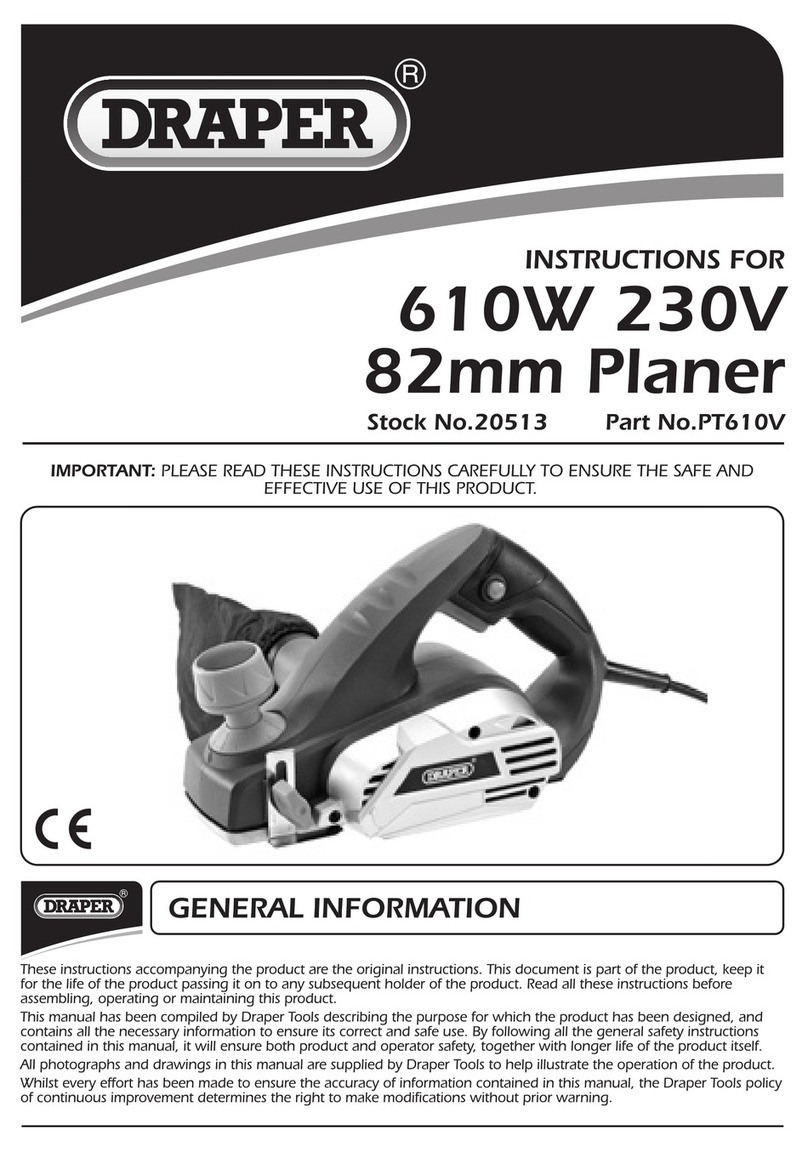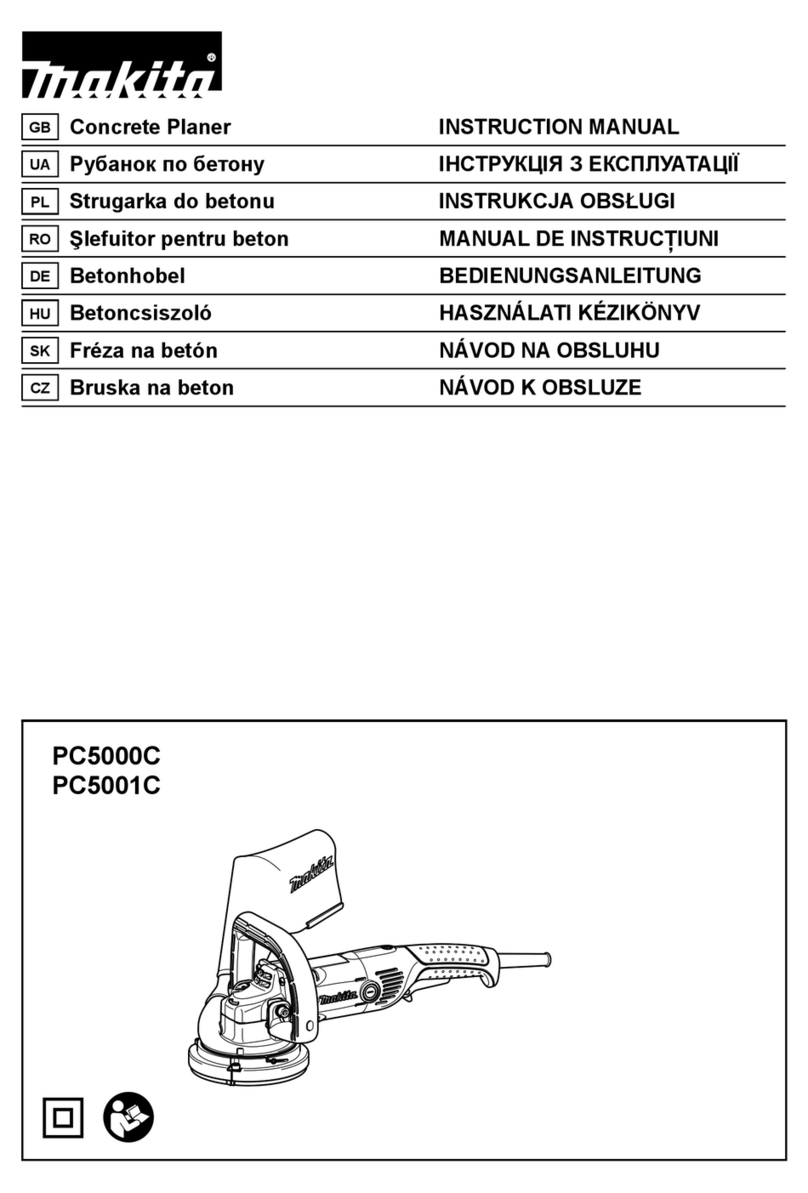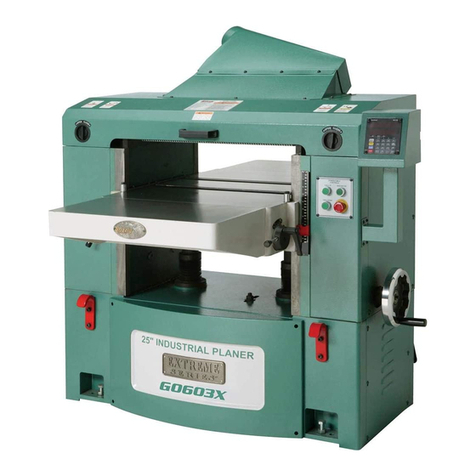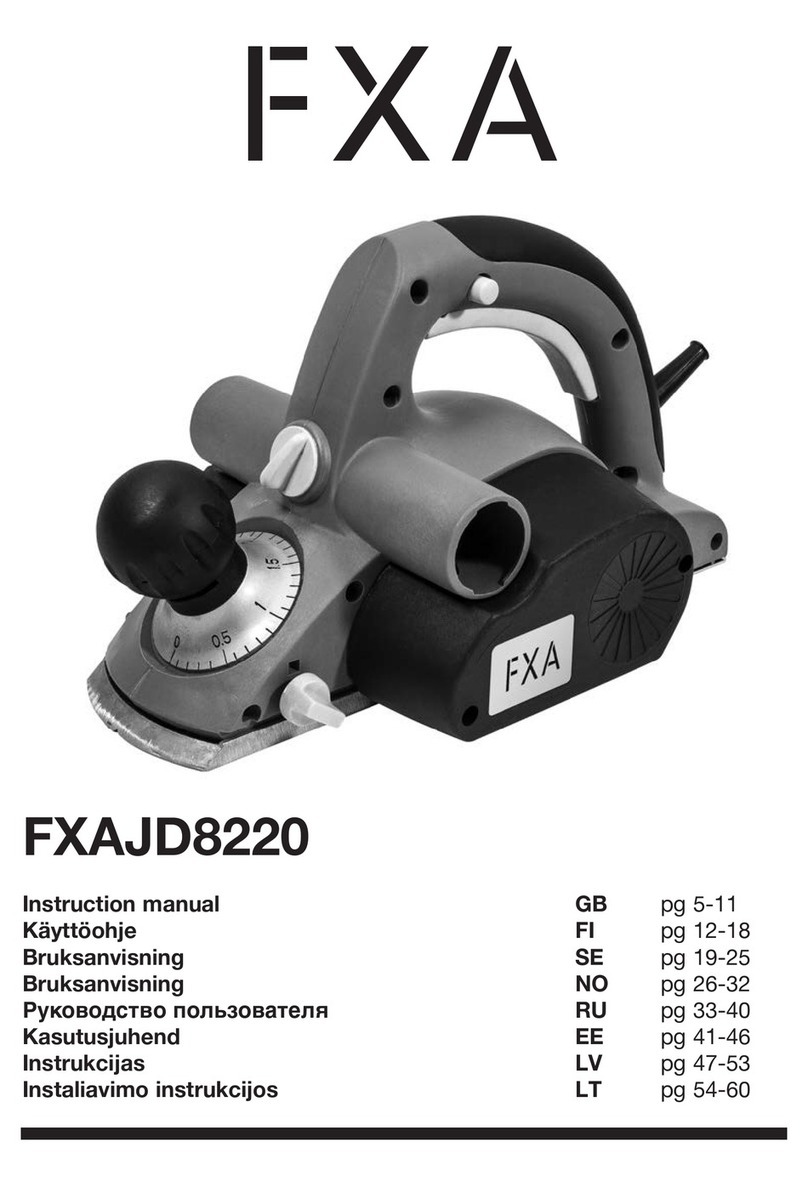
3
Check damaged parts. Before using this tool, check guards and other parts carefully
to determine if they operate properly and perform their intended functions. Check the
alignment of moving parts; check also for binding of moving parts, breakage or
damage of parts, incorrect mounting, and any other conditions that may alter the
operation of the tool.
Any part that is damaged, defective switches included, should be properly repaired or
replaced by a qualified service technician. Do no use the tool if the starter switch is
not functioning properly.
WARNING: The operation of any tool can result in foreign objects being
propelled into your eyes, resulting in severe eye damage. When operating power
tools, always wear safety goggles or safety glasses with side shields and a full face
shield when needed.
WARNING: If any parts are missing, do not operate the tool until the missing
parts have been replaced. Doing so could result in serious personal injury.
ELECTRICAL SAFETY
•Double insulated tools are equipped with a polarized
plug (one blade is wider than the other). This plug will fit
in a polarized outlet only one way. If the plug does not
fit in the outlet, reverse the plug. If it still does not fit,
contact a licenced electrician to install a polarized outlet.
Do not change the plug in any way. Double insulation
eliminates the need for a three wire grounded power cord
and grounded power supply system.
•Avoid contact with grounded surfaces such as pipes,
radiators, ranges and refrigerators. There is an increased risk of electric shock
if your body is grounded.
•Do not expose power tools to rain or wet conditions. A wet power tool will
increase the risk of electric shock.
•Do not abuse the cord. Never use the cord to carry the tool, or pull the plug
from an outlet. Keep cord away from heat, oil, sharp edges or moving parts.
Replace damaged cords immediately. Damaged cords increase the risk of
electric shock.
•When operating a power tool outside, use an outdoor extension cord
marked “W-A” or “W”. These cords are rated for outdoor use and reduce the
risk of electric shock.
•Replace damaged cords immediately. Use of damaged cords can shock, burn or
electrocute the operator of the tool.
•If an extension cord is necessary, a cord with adequate size conductors should
be used to prevent excessive voltage drop, loss of power or overheating. The
table shows the correct size to use, depending on cord length and nameplate
amperage rating of tool. If in doubt, use the next heavier gauge. Always use UL
and CSA listed extension cords.






